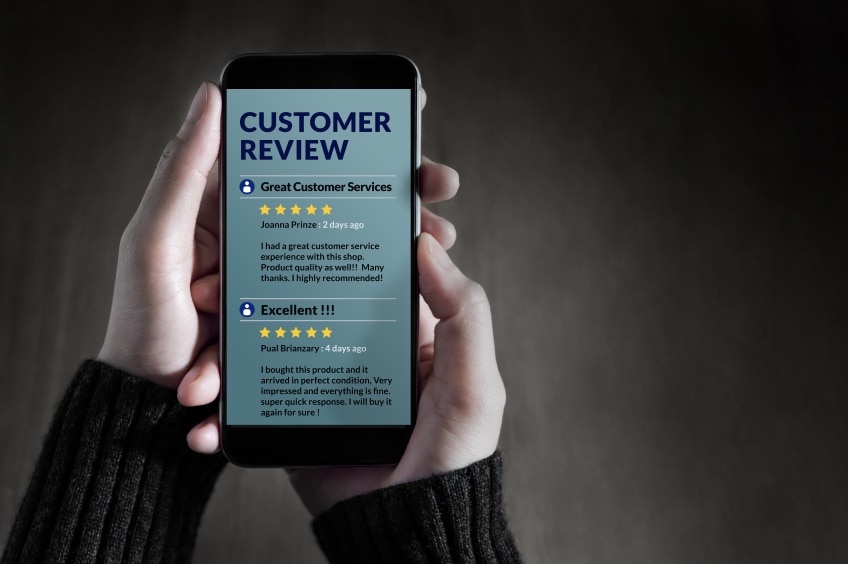For many roofing contractors, referrals generate the best business leads. But how much do you know about one of the most widespread forms of referrals: online reviews?
You can boost your roofing reputation management by gathering, responding to, and sharing online reviews. Many business owners think of reviews as something outside of their control, but the truth is, you have the power to make online reviews work for you. Read on to learn how.
Drive New Business to Your Door
Gone are the days when homeowners relied solely on friends for recommendations when they needed roof repairs or a replacement. Today, more than 90% of consumers scan the internet to find local businesses, and part of their research involves reading online reviews from other customers.
Online reviews don't just bring in new leads; they also affect your reputation. You can better manage your digital reputation by developing a strategy for tracking and responding to online comments. To get an idea of what makes for successful online roofing reputation management, you can start by thinking of "The Five Rs":
- Recency: A steady stream of recent reviews shows your company is active.
- Relevance: Reviews must be relevant to a potential customer's needs and location to influence them.
- Response: You can show off your customer service by responding quickly to both positive and negative reviews.
- Ratings: Many people will glance at your overall star rating before investigating further, so monitor your star rating and take action if it drops.
- Reputation: All of the above comes together to create your overall online reputation.
Understanding these elements can help you figure out how you can use reviews to build trust with potential customers.
Reach for the Stars
You likely already know consumers use a star rating system when judging their experiences with companies. Studies also show that nearly half of consumers only consider businesses with ratings of four or more stars. In addition, reviews may help you rank higher in online searches so more potential clients can find you.
To generate online word-of-mouth, encourage your satisfied customers to leave a review. Reviews that you personally collect (known as first-party reviews) can be gathered by encouraging homeowners to click a call-to-action button on your website or social media right after a job is complete. You may also consider leaving them a postcard that includes a QR code that allows them to instantly upload a review via their smartphone.
You'll also need third-party reviews, which customers leave on sites like Facebook, Google, and Angie's List. User testimonials on sites unaffiliated with your company bring legitimacy to your business. One way to encourage third-party reviews is to create a shareable link of your Google My Business page, which makes it easy for customers to post a review there.
Respond to Positive and Negative Reviews
When people do leave reviews, respond to as many as you reasonably can. Responding to positive reviews demonstrates your passion for customer service and helps with customer retention. Of course, not all reviews are going to be stellar, but there are ways to handle the negative reviews, too. A recent report revealed that 97% of people doing research online will read companies' responses to reviewers, and another showed that 45% of consumers are more likely to use a business that responds to their negative reviews.
Be sure to address complaints quickly—ideally within 24 hours. Express regret for the negative experience, validate the customer's feedback and move the discussion offline when possible so you can resolve the issue. In a best-case scenario, you'll be able to turn that bad review into a glowing one, but regardless of the outcome of the individual review, responding to negative reviews shows potential clients you are proactive and transparent.
Verify Your Business on Google
If customers can't find you, they can't hire you, so update your business information on review sites. When consumers need roofing services, they'll likely start with a Google search. Google delivers hundreds of millions of calls and billions of direction requests for businesses all over the world every month.
Once you verify your business on Google My Business, your company information can appear on Maps, Search, and other Google services where potential customers can get in touch with you with one click. These services can also promote your online presence while tracking statistics, including who is searching for your services or interacting with your website. Plus, your Google listing makes online reviews and your overall star rating easily accessible to potential customers.
Finalize Your Game Plan
After committing to generating reviews, stay on top of your roofing reputation management strategy by designating someone to monitor and respond to online comments. Aim for a high response rate from happy customers and reviews of at least four stars, and you'll boost your bottom line while building trust with future clients.
For more tips and solutions that can help you achieve your business goals, check out GAF's resources to grow your business.

